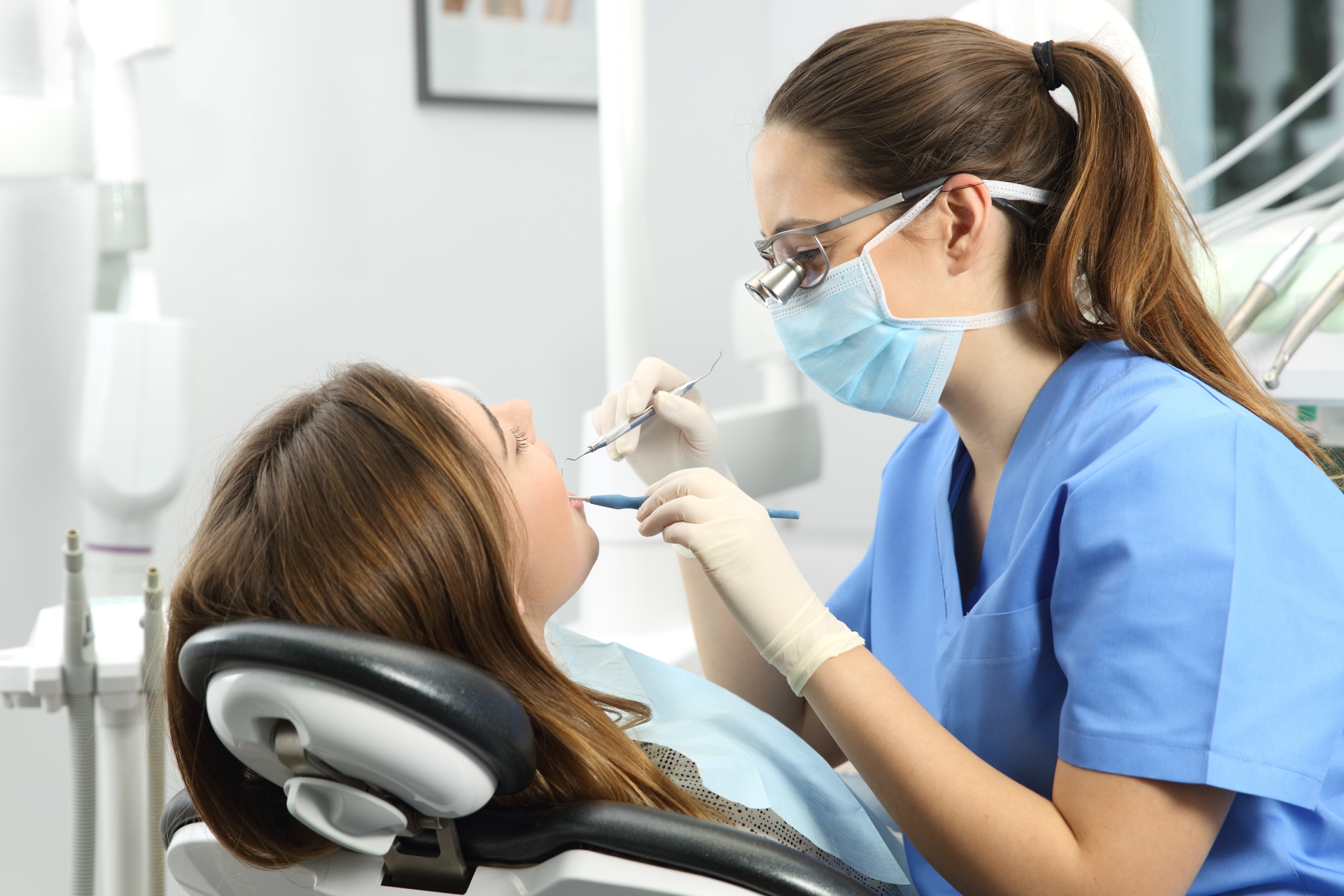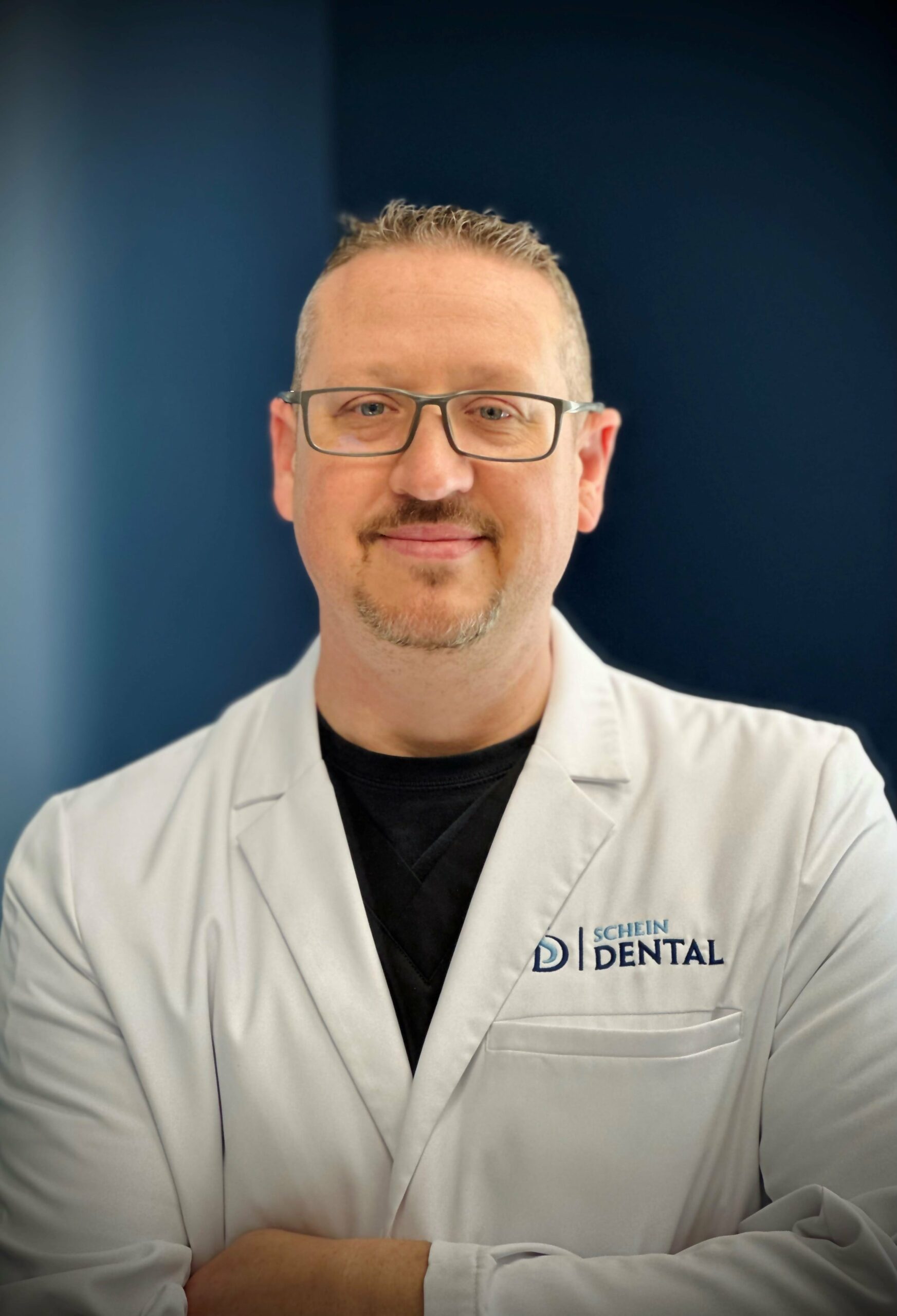
Your gums may not get as much attention as your teeth, but they play a big role in your oral health. When your gums aren’t healthy, your smile (and your overall health) can suffer.
Unfortunately, gum disease is sneaky. It starts as a little redness or some bleeding when you brush. But if you ignore it, it can lead to tooth loss and even affect your overall health.
Gum disease comes in two main stages: gingivitis and periodontitis. Both are common, with severe periodontal diseases estimated to affect more than 1 billion cases worldwide.
Gingivitis is the early stage, where gums get red and puffy and may bleed a little when brushing. If you ignore it, it can turn into periodontitis. That’s the more serious stage, where the gums pull away from the teeth, bone starts to break down, and teeth can loosen or fall out.
At Schein Dental, we believe in catching problems early. We take a proactive approach with every patient because stopping it early is always better than needing gum disease treatment later.
Let’s break down what causes it, how to prevent gum disease, and when you should see a dentist.
What Causes Gum Disease?
Most cases of gum disease start with plaque. That’s the sticky film of bacteria that forms on your teeth every day. If you don’t clean it off well, it hardens into tartar. That tartar allows more bacteria to build up and infect your gums.
But there are other risk factors, too:
- Poor brushing and flossing habits.
- Smoking or tobacco use.
- Diabetes.
- Stress.
- A family history of gum disease.
- Certain medications.
Be sure to brush and floss your teeth regularly. Avoid smoking or tobacco use, and see your dentist regularly to ensure your oral health is in good shape.
At the same time, you should watch out for early signs like:
- Red or swollen gums.
- Bleeding when you brush or floss.
- Bad breath.
- Gums pulling away from your teeth.
- Loose teeth.
If you notice these symptoms, don’t wait. Gum disease treatment is a lot less painful and expensive if you catch it earlier. So, the moment you see these signs, see a dentist immediately.
How to Prevent Gum Disease: 5 Daily Habits You Should Develop
As common as gum disease is, it’s totally preventable. Just a few small habits each day can keep your gums strong and healthy. Here are five things you should start doing now to prevent gum disease.
1. Brush Twice Daily: The Right Way
Brushing helps remove plaque, and you already probably do it twice a day. But how you brush matters just as much as how often you do it. Using the right technique can help you clean your teeth thoroughly and protect your gums.
Here’s how you should do it:
- Start with a soft-bristled toothbrush. Hard bristles can be rough on your gums and enamel.
- Brush for two minutes as that’s the ideal time to effectively remove plaque and bacteria.
- Make sure you hold your brush at a 45-degree angle to your gums and focus on brushing along the gum line where plaque tends to build up.
- Don’t forget to use fluoride toothpaste, which strengthens your enamel and helps fight cavities.
Pro tip: Avoid brushing too hard. It may feel like you’re cleaning better, but applying too much pressure can damage your gums and cause them to recede. Be gentle, and let your brush do the work.
2. Don’t Skip Flossing
Most people are under the impression that flossing only helps remove food particles stuck between your teeth. While that’s true, flossing also removes plaque between your teeth and below the gum line, where your toothbrush can’t reach.
Skipping this simple step means you’re leaving up to 40% of your tooth surface uncleaned, which in turn, increases the risk of gum disease. In other words, you should floss once a day, and here’s how you should do it:
Start with about 18 inches of floss and wrap it around your fingers.
- Use a clean section of floss for each tooth.
- Gently slide the floss between your teeth, curving it into a “C” shape against each tooth.
- Don’t snap the floss into your gums. Be gentle. This helps remove food particles and plaque buildup right below the gum line, where it’s most harmful.
Pro Tip: If traditional flossing doesn’t work for you, try using a water flosser or interdental brushes. These alternatives can be just as effective in removing plaque and reducing the risk of gum disease.
3. Use an Antibacterial Mouthwash
Even after brushing and flossing, you’ll have some bacteria left behind. That’s where an antibacterial mouthwash comes in. Besides killing the harmful bacteria that brushing and flossing might miss, it also helps reduce plaque and keeps your breath fresh.
To get the most out of your antibacterial mouthwash:
- Look for one with ingredients like chlorhexidine or cetylpyridinium chloride (CPC), which are proven to kill bacteria and reduce plaque.
- Use it after brushing and flossing to make sure your mouth stays fresh and bacteria-free for hours.
- Follow the directions on the bottle. Some mouthwashes may recommend swishing for 30 seconds, while others could suggest using it twice a day for the best results.
Pro Tip: Be sure not to rinse with water immediately afterward, as it could wash away the beneficial ingredients. Let the antibacterial mouthwash keep working. This easy step can significantly boost your gum health.
4. Watch Your Diet
What you eat has a direct impact on your oral health. A balanced diet can help keep your gums and teeth strong, while sugary or acidic foods can increase your risk of gum disease.
Some foods help keep your gums healthy. Try adding more:
- Foods rich in vitamin C, like oranges, strawberries, and bell peppers—help strengthen your gums and boost your immune system.
- Crunchy veggies, such as carrots and celery, can also help clean your teeth naturally while stimulating saliva production, which is key for neutralizing acids in your mouth.
- Calcium-rich foods like cheese, yogurt, and leafy greens help maintain strong teeth and gums.
- But it’s not just about what you eat. Drinking plenty of water throughout the day helps wash away food particles and bacteria.
Pro Tip: While eating healthy is a good habit, try to cut down on sugary snacks, acidic drinks like soda and fruit juices, and alcohol. These can dry out your mouth, promote plaque buildup, and increase inflammation – all of this can increase the likelihood of gum disease.
5. Be Consistent with Your Dental Visits
Even if you’re doing everything right at home, stay on top of your professional dental cleanings and checkups. While brushing and flossing can remove most plaque, tartar (hardened plaque) can only be removed by a dentist or hygienist. That’s why regular visits are so important.
Regular dental checkups help you:
- Remove tartar.
- Catch gum disease early.
- Keep your teeth and gums in top shape.
Regular checkups are also an excellent way to stay on top of issues like tooth decay, tooth replacement, dental implants, and crowns.
Pro Tip: At Schein Dental, we recommend seeing your dentist every six months for a cleaning and checkup. If your gums are sensitive or you’ve had issues before, you might need more frequent visits.
Bonus Tip: Quit Smoking
Smoking is one of the most significant risk factors for gum disease. If you smoke, your chances of developing gum problems are much higher. Smoking slows down healing and weakens your immune system, making it harder for your body to fight off infections, including those in your gums.
Additionally, smokers often don’t notice gum issues as easily since smoking reduces bleeding, which can be an early warning sign of gum disease. Smoking also increases the risk of advanced periodontitis, a severe form of gum disease that can lead to tooth loss.
According to the Centers for Disease Control (CDC), Adults aged 65 or older who smoke cigarettes are twice as likely to have untreated cavities as those who never smoked. Plus, smoking also increases the risk of oral cancer. In short, quitting smoking can significantly improve your oral health and overall well-being.
When Should You See a Dentist About Your Gums?
While daily habits can go a long way in keeping your gums healthy, some gum problems need more than just home care. If you notice any of the following symptoms, it’s time to see us at Schein Dental. Starting your gum disease treatment sooner can save your mouth from further damage.
Here are a few warning signs you should look out for:
- Bad breath that doesn’t go away.
- Gums pulling back (receding).
- Pus between teeth and gums.
- Pain when chewing.
- Loose or shifting teeth.
At Schein Dental, we’ll thoroughly examine your gums and recommend the most appropriate treatment. This could include deep cleaning (scaling and root planing), antibiotics to fight infection, or even more advanced gum disease treatments if needed.
Want for Healthier Gums? Let’s Make It Happen!
Gum disease doesn’t just happen overnight. It builds up over time. But so do healthy habits. By brushing carefully, flossing daily, using an antibacterial mouthwash, eating healthy, avoiding smoking, and keeping up with your dental checkups, you can reduce the risk.
And remember, you’re not in this alone. If it’s been a while since your last cleaning, or if your gums are showing signs of trouble, we’re here to help. Call 704-274-1940 or book your appointment online now to get started!






